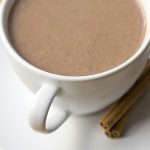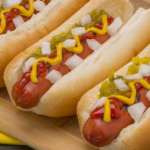Jell-O! The Jiggly, Wiggly American Icon.

Growing up, I was exposed to Jell-O in just about any way and every way one can imagine--molded, sliced, cubed up, chopped up, plain or mixed with fruit, cottage cheese, and all sorts of vegetables. It seems that every grandmother, mother, and daughter had their favorite Jell-O dish and an extreme compulsion to bring it to each family gathering, church supper, funeral repast, or self-catered wedding reception they attended.
While certainly not the shiniest spoon of the culinary world, my granny used to make a green Jell-O salad that I absolutely loved. It was made with lime Jell-O that was 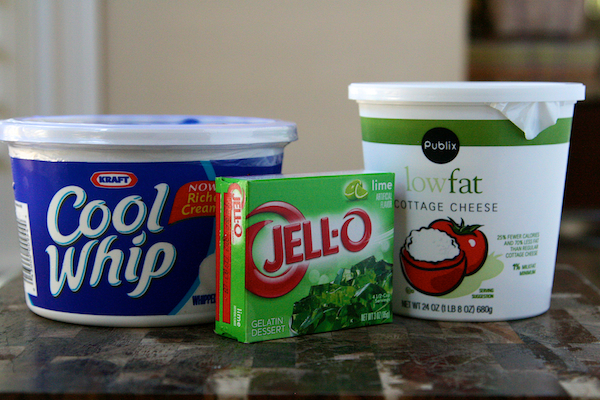 chilled until almost set and into which cottage cheese, Cool Whip, crushed pineapple, and chopped pecans were mixed. Granny said she got the recipe from a lady that worked at the local Piccadilly Cafeteria, where it was served every day. I once asked her if the salad had a name, and without the slightest hesitation she replied, "Green Jell-O salad." I suppose keeping it simple is the best policy.
chilled until almost set and into which cottage cheese, Cool Whip, crushed pineapple, and chopped pecans were mixed. Granny said she got the recipe from a lady that worked at the local Piccadilly Cafeteria, where it was served every day. I once asked her if the salad had a name, and without the slightest hesitation she replied, "Green Jell-O salad." I suppose keeping it simple is the best policy.
This fruit-flavored gelatin-based product most of us know as Jell-O has been an integral part of American culture for over a century. But to understand its development, one must start in the 15th century when producing the elaborate molded gelatin centerpieces so popular in medieval Europe was reserved for only the wealthy. The reason for its exclusivity was due to the arduous, time-consuming ordeal it took to render the collagen from which gelatin, a tasteless, colorless, odorless protein, is made. To best describe the lengthy process we can go to this excerpt from The Art of Cookery, Made Plain and Easy (London, 1747) by Hannah Glasse.
Take out the great Bones of four Calves Feet, and put the Feet into a Pot with ten Quarts of Water, three Ounces of Hartshorn, three Ounces of Isinglass, a Nutmeg quarter'd, four Blades of Mace; then boil this till it comes to two Quarts, and strain it through a Flannel-Bag, let it stand twenty-four Hours, then scrape all the Fat from the Top very clean, then slice it, and put to it the Whites of six Eggs beaten to Froth, boil it a little, and strain it again through a Flannel-Bag, then run the Jelly into little high Glasses...You must colour Red with Cochincal, Green with Spinage, Yellow with Saffron, Blue with Syrup of Violets, White with thick Cream, and sometimes the felly by itself. You may add Orange-flower Water, or Wine and Sugar, and Lemon if you please, but this is all Fancy.
As in Europe, gelatin delicacies were also used by elite American colonists to make social statements and impress dinner guests with the size of their kitchen staffs. Thomas Jefferson, whose culinary tastes were influenced by his time in France, often served guests wine gelatin at his Monticello estate.
JELL-O TRIVIA & FUN FACTS
- The original Jell-O flavors developed by Pearle and May Wait were strawberry, raspberry, orange, and lemon. Strawberry remains today's best seller. Lime was introduced in 1930.
- In the early 1900s immigrants passing through Ellis Island were often served a bowl of Jell-O as a "Welcome to America" treat.
- In the 1923 Cecil B. DeMille's silent film The Ten Commandments, Jell-O was used to create the effect of parting the Red Sea so the Israelites could escape Egypt.
- On January 6, 1925 Jell-O was issued a patent for a sugarless gelatin dessert named D-Zerta.
- In 1927 Chocolate Jell-O was introduced. It was discontinued the same year.
- In 1934 General Foods, a pioneer in radio marketing, signed Jack Benny to sing the "J-E-L-L-O" song, making it a world-wide household name.
- In the 1939 movie The Wizard of Oz, the horse that changed colors was actually six horses sponged down with Jell-O.
- Jell-O continued to be made in Le Roy, New York until 1964 when it was moved to Dover, Delaware.
- In 1997 the Jell-O Museum opened in Le Roy, New York. The museum showcases more than 100 years of brand history including Jell-O artwork by Max Parrish, Norman Rockwell, and other famous artists.
- In 1974 Dr. Adrian Upton attached an EEG machine to a dome of lime Jell-O in an effort to prove the machine should not be the only method used to determine if a person is alive or not. The EEG machine showed Jell-O produces alpha waves much the same as a human. And we all know Jell-O is not alive.
- Also in 1974, with Jell-O sales on the decline, an advertising campaign was launched to introduce Jigglers, Jell-O snacks molded into fun shapes that could be eaten as finger food. The campaign helped sales rise back.
- In 2001 Utah State Representative Lenard Blackham introduced legislation declaring "Jell-O brand gelatin be recognized as the favorite snack of Utah." With only two dissenting votes, Jell-O became the official Utah state snack food.
- In the 1960s Jell-O introduced several savory flavors such as celery, cabbage, green pepper, and cooked pasta. They were all discontinued.
- In 1996, astronaut Shannon Lucid took Jell-O on her 140-day mission aboard the Russian space station. She served the Russian crewmates their very first Jell-O on Easter Sunday.
It was during the 19th century Industrial Revolution that America also began to witness a number of major changes in its food production, including an easier solution for gelatin-based applications than boiling and straining animal hoofs. In the early 1800s, Peter Cooper, inventor of America's first steam locomotive, was searching for a new glue when he developed the process for making dried gelatin sheets. Then by 1845, he patented (U.S. Patent 4084) a powdered version he called "Portable Gelatin." But because Cooper was interested in glue, not gelatin, he did little or nothing to commercialize his find.
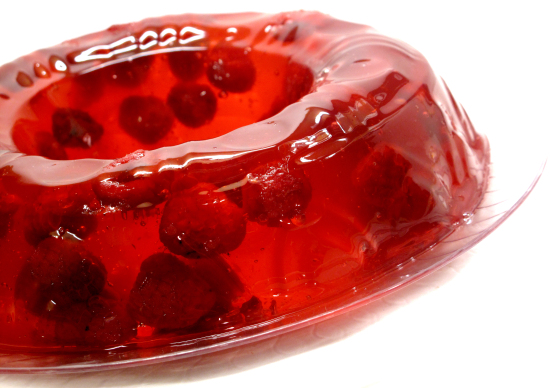
In the small town of Le Roy, New York, Pearle Bixby Wait and his wife May operated a struggling cough syrup and laxative business. In search for something that would provide them a more successful business opportunity, they purchased Cooper's gelatin patent and began flavoring the tasteless powder with sugary fruit syrups they used in making their cough medicine. In 1895 the Waits trademarked their great tasting new dessert as "Jell-O," combining both the words gelatin and jelly (from the Latin "gelare," meaning to congeal or freeze). Adding the "O" at the end was just a popular practice at the time--a means of taking a common word and making it easy to trademark.
By 1899, Pearle and May had exhausted the capital needed to successfully market their new product, so on September 8 they sold the formula, patent, and name to a local business, Genesee Pure Food Company, for $450 (about $13,000 in today's money), owned by Orator Francis Woodward.
In spite of the Genesee Company's knowledge and experience in successful food marketing, Jell-O's sagging sales frustrated Woodward. So much so, that he reportedly offered to sell the Jell-O business to his plant superintendent, Andrew S. Nico, for $35. Nico turned down the offer. Finally in 1902, Woodward's efforts started paying off when he sent an army of well-dressed salesmen to communities, fairs, and church socials to pass out samples. Jell-O sales that year were over $250,000.
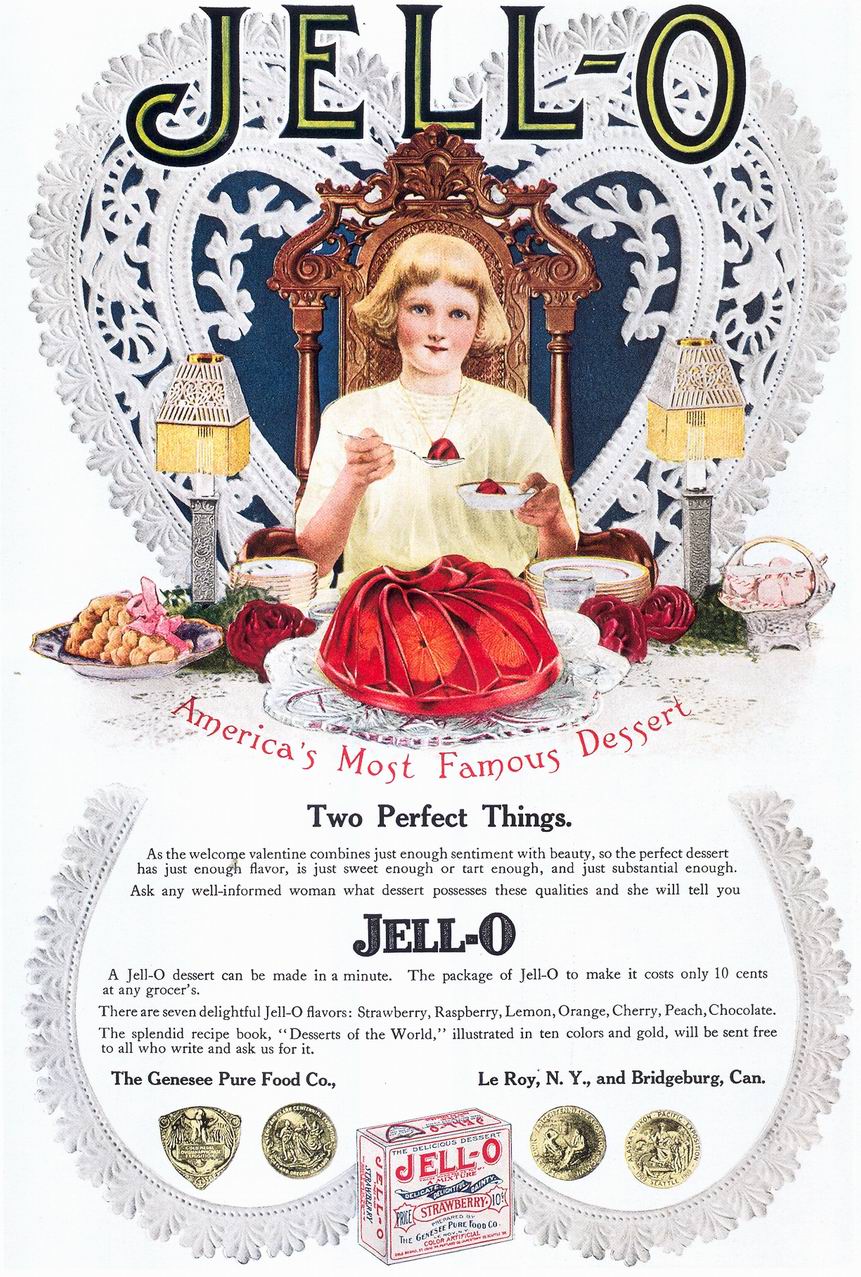
In 1904, Genesee's advertising director William E. Humelbaugh convinced Woodward to take some of the profits from Grain-O, one of the company's steady income producers, and spend it to market Jell-O. Three-inch ads were placed in Ladies Home Journal at $365 each, proclaiming Jell-O to be "America's Most Famous Dessert." Free Jell-O recipe booklets were printed sporting cover illustrations by such noted artists as Rose O'Neill, Maxfield Parrish, and Norman Rockwell. Later that year, Genesee introduced the Jell-O Girl, four-year old Elizabeth King, whose likeness appeared in ads holding a teakettle and a package of Jell-O with the tag line, "You can't be a kid without it." The efforts quickly paid off as sales and national brand recognition began to soar.
In 1923, Genesee Pure Foods Company officially became the Jell-O Company and in 1925 merged with Postum Cereal, Inc. This union eventually became General Foods Corporation. Today Jell-O is owned by Kraft/General Foods.
So there you have it, the story of Jell-O's development and how it grew from an obscure product with sales of just $250,000 in 1902, to today's cultural icon with a 99% brand recognition and unit sales of over 750,000 boxes each and every day.

I'm going to the kitchen now and throw together granny's Green Jell-O Salad for my wife to take to the Ladies Club potluck luncheon tomorrow. And just for fun, I'll make some tequila-strawberry Jell-O shots for myself and the guys. Why not buy a box or two of your favorite Jell-O flavors and make some jiggly fun for yourself and your family tonight.
Make Em:Granny's Green Jell-O Salad
